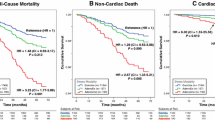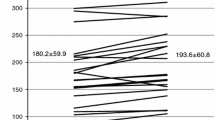Abstract
Pharmacologic stress myocardial perfusion imaging is being performed with increasing frequency over exercise stress. Dipyridamole and adenosine have a high side-effect profile, provide higher than needed coronary artery flow rates, and use a relatively complicated method of administration. Based on preclinical animal work, three selective adenosine A2A receptor agonists, regadenoson (CVT3146), binodenoson (MRE0470 or WRC0470), and apadenoson (BMS068645 or ATL146e), may overcome these limitations and are now in Phase III studies as pharmacologic stress agents. For single-photon emission CT imaging, binodenoson and regadenoson were concordant with adenosine images for detection and quantitation of ischemia. Despite the high A2A selectivity of binodenoson and regadenoson in preclinical studies, subjective side effects attributable to other adenosine receptor subtypes were still observed in human studies and are similar to or slightly lower than adenosine. There have been no reports of atrioventricular block or bronchospasm with either regadenoson or binodenoson in published trials.
Similar content being viewed by others
References and Recommended Reading
Cerqueira MD, Verani MS, Schwaiger M, et al.: Safety profile of adenosine stress perfusion imaging: results from the Adenoscan Multicenter Trial Registry. J Am Coll Cardiol 1994, 23:384–389.
Ranhosky A, Kempthorne-Rawson J: The safety of intravenous dipyridamole thallium myocardial perfusion imaging. Intravenous Dipyridamole Thallium Imaging Study Group. Circulation 1990, 81:1205–1209.
Hendel RC, Jamil T, Glover DK: Pharmacologic stress testing: new methods and new agents. J Nucl Cardiol 2003, 10:197–204.
Iskandrian AS, Verani MS, Heo J: Pharmacologic stress testing: mechanism of action, hemodynamic responses, and results in detection of coronary artery disease. J Nucl Cardiol 1994, 1:94–111.
Travain MI, Wexler JP: Pharmacological stress testing. Semin Nucl Med 1999, 29:298–318.
Cerqueira MD: The future of pharmacologic stress: selective A2A adenosine receptor agonists. Am J Cardiol 2004, 94:33D-40D; discussion 40D–42D.
Shryock JC, Snowdy S, Baraldi PG, et al.: A2A-adenosine receptor reserve for coronary vasodilation. Circulation 1998, 98:711–718.
Trochu JN, Zhao G, Post H, et al.: Selective A2A adenosine receptor agonist as a coronary vasodilator in conscious dogs: potential for use in myocardial perfusion imaging. J Cardiovasc Pharmacol 2003, 41:132–139.
Gao Z, Li Z, Baker SP, et al.: Novel short-acting A2A adenosine receptor agonists for coronary vasodilation: inverse relationship between affinity and duration of action of A2A agonists. J Pharmacol Exp Ther 2001, 298:209–218.
Zhao G, Linke A, Xu X, et al.: Comparative profile of vasodilation by CVT-3146, a novel A2A receptor agonist, and adenosine in conscious dogs. J Pharmacol Exp Ther 2003, 307:182–189.
Glover DK, Ruiz M, Yang JY, et al.: Pharmacological stress thallium scintigraphy with 2-cyclohexylmethylidenehydrazinoadenosine (WRC-0470). A novel, short-acting adenosine A2A receptor agonist. Circulation 1996, 94:1726–1732.
Kern M, Hodgson J, Rossen J, et al.: Hyperemic coronary blood flow induced by a selective adenosine A2A receptor stimulation: first report in patients of a well-tolerated novel agent for stress imaging. Abstract. J Am Coll Cardiol 2001, 37(Suppl A):299A.
Udelson JE, Heller GV, Wackers FJ, et al.: Randomized, controlled dose-ranging study of the selective adenosine A2A receptor agonist binodenoson for pharmacological stress as an adjunct to myocardial perfusion imaging. Circulation 2004, 109:457–464. First and largest clinical trial looking at safety and efficacy of A2A-selective agents.
Kerensky R, von Mering G, Kent K, et al.: Dose dependent increase in human coronary blood flow velocity following an IV bolus of CVT-3146, a novel A2A adenosine receptor agonist: a potential agent for the use in pharmacological stress testing for myocardial perfusion imaging [abstract]. Circulation 2002, 106:II-618.
Hendel RC, Bateman TM, Cerqueira MD, et al.: Initial clinical experience with regadenoson, a novel selective A2A agonist for pharmacologic stress single-photon emission computed tomography myocardial perfusion imaging. J Am Coll Cardiol 2005, 46:2069–2075. First trial on A2A-selective agents given as a rapid bolus at a fixed dose. Showed preliminary safety and efficacy in a small trial.
Author information
Authors and Affiliations
Corresponding author
Rights and permissions
About this article
Cite this article
Cerqueira, M.D. Advances in pharmacologic agents in imaging: New A2A receptor agonists. Curr Cardiol Rep 8, 119–122 (2006). https://doi.org/10.1007/s11886-006-0022-1
Issue Date:
DOI: https://doi.org/10.1007/s11886-006-0022-1




